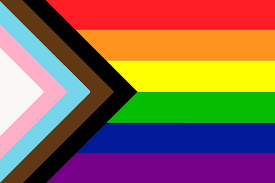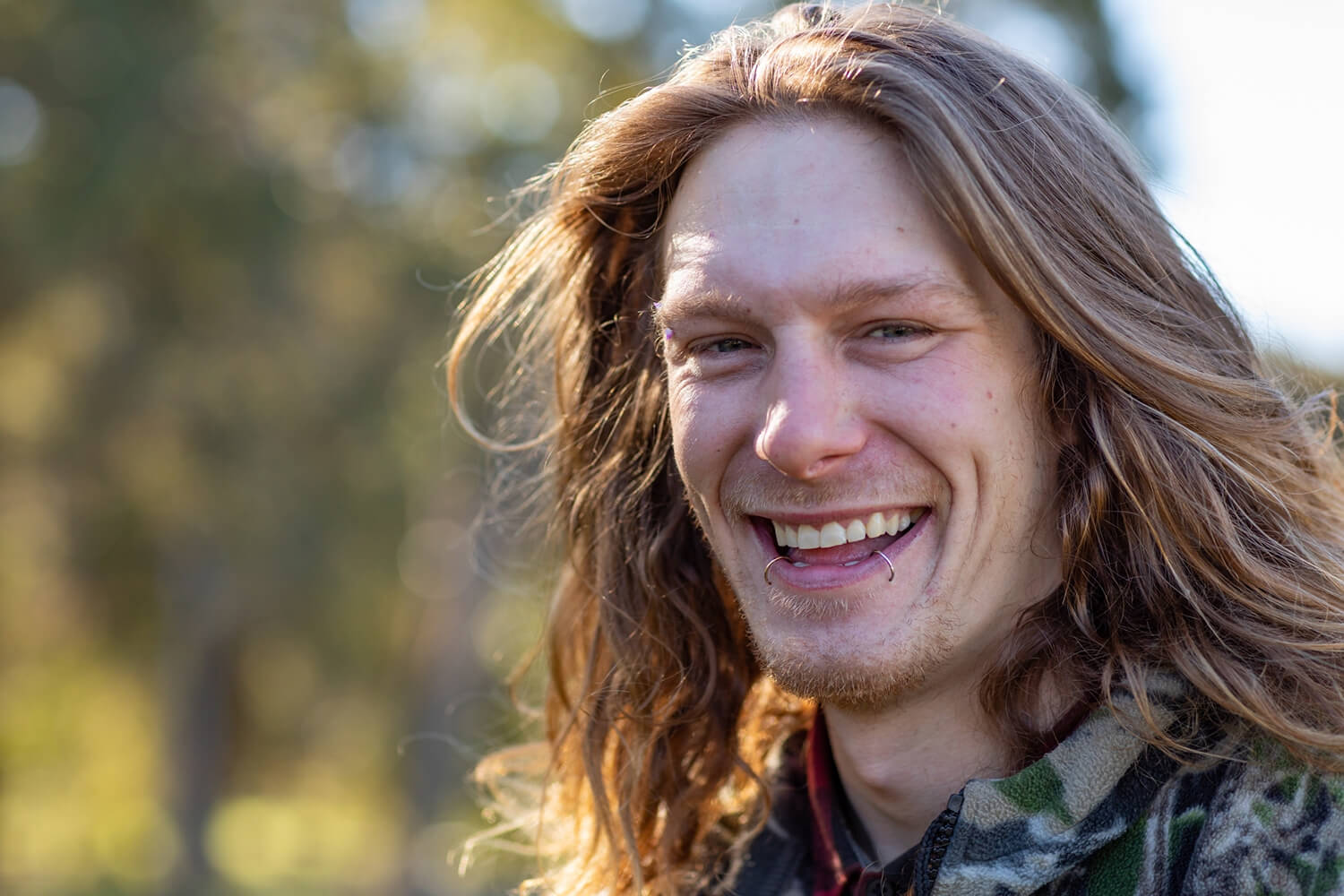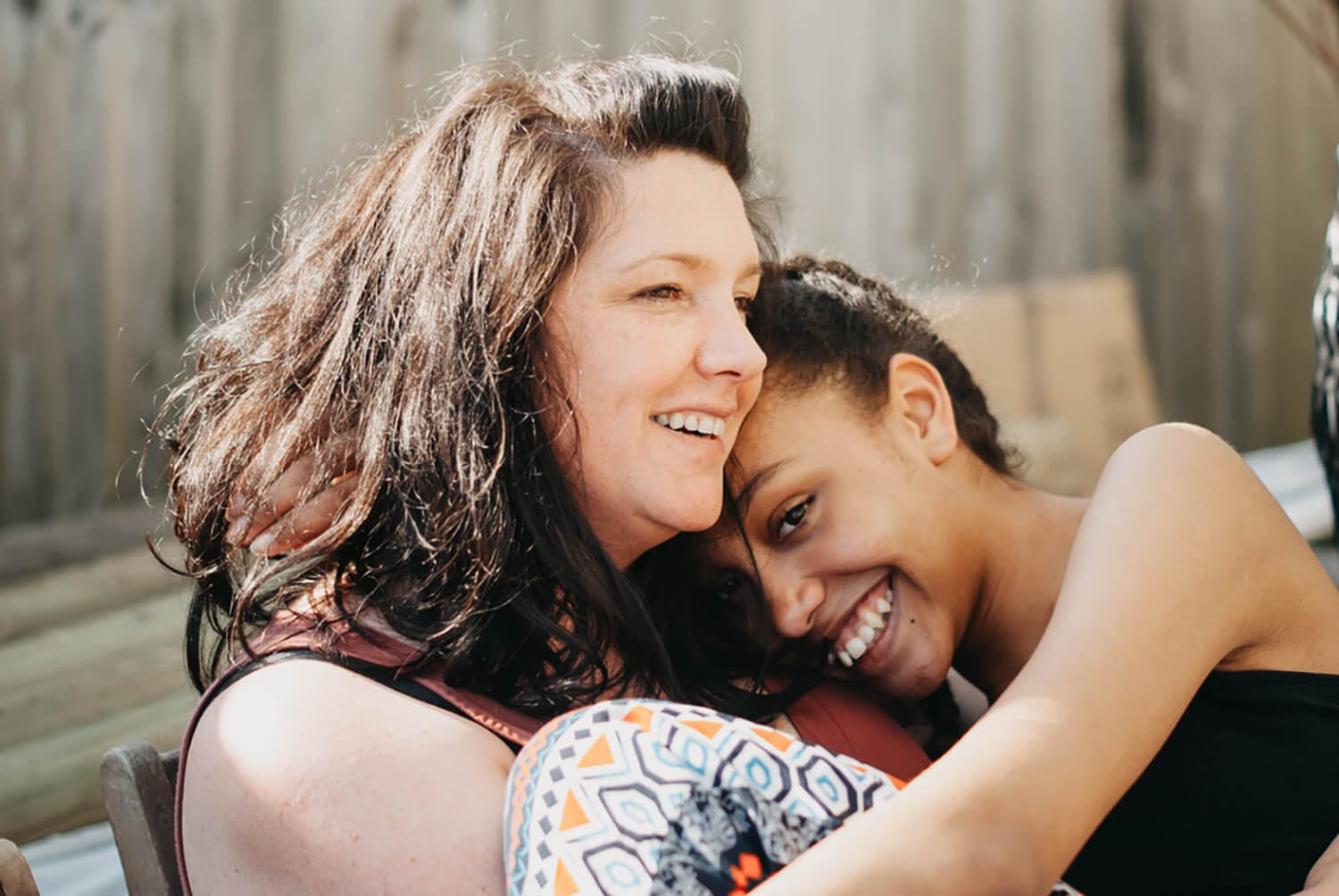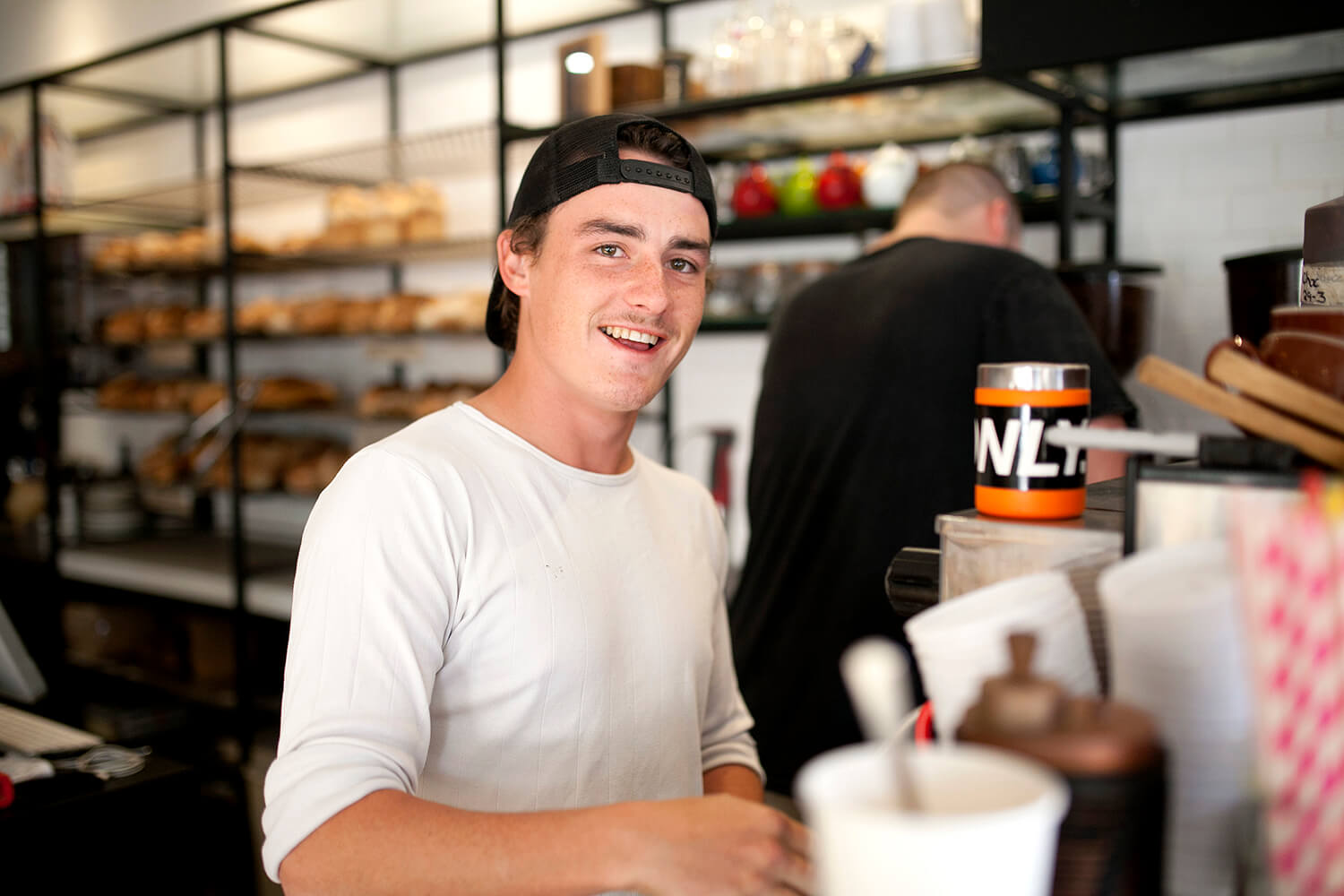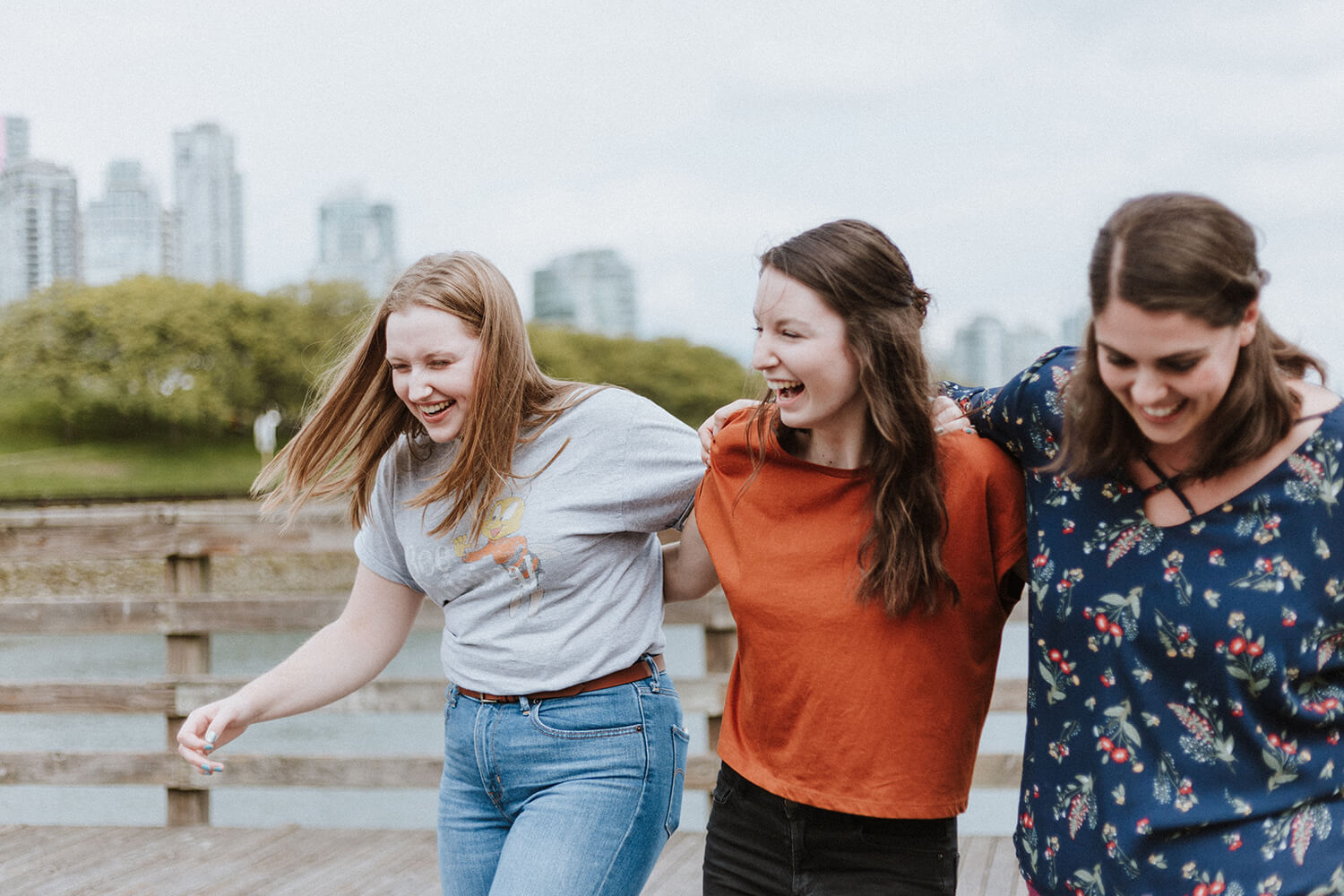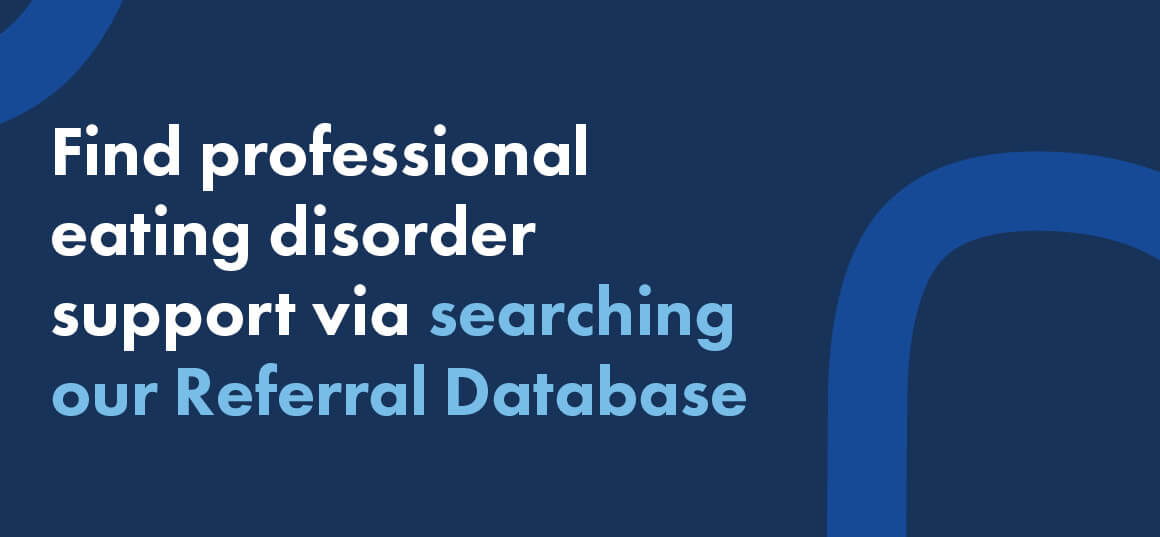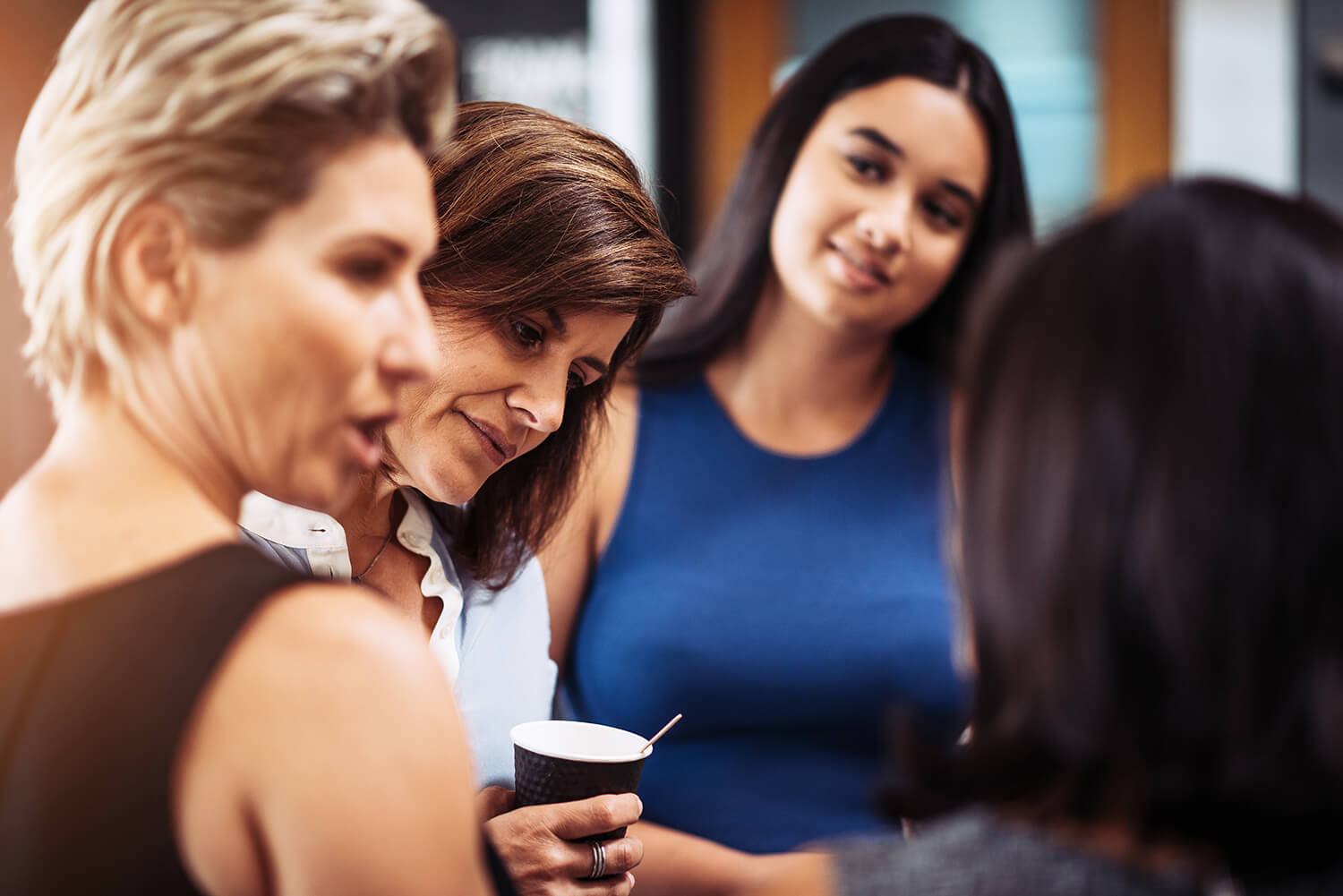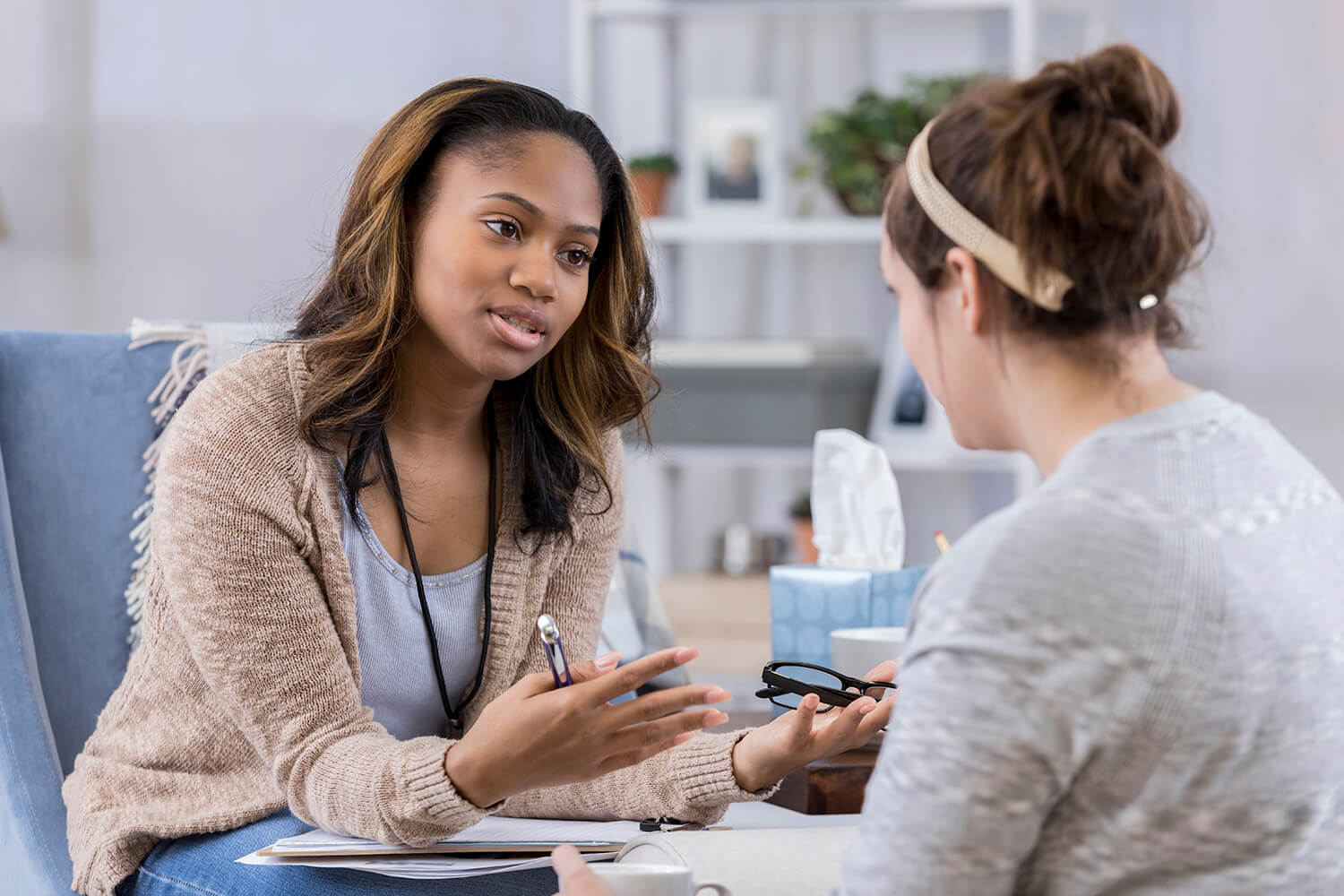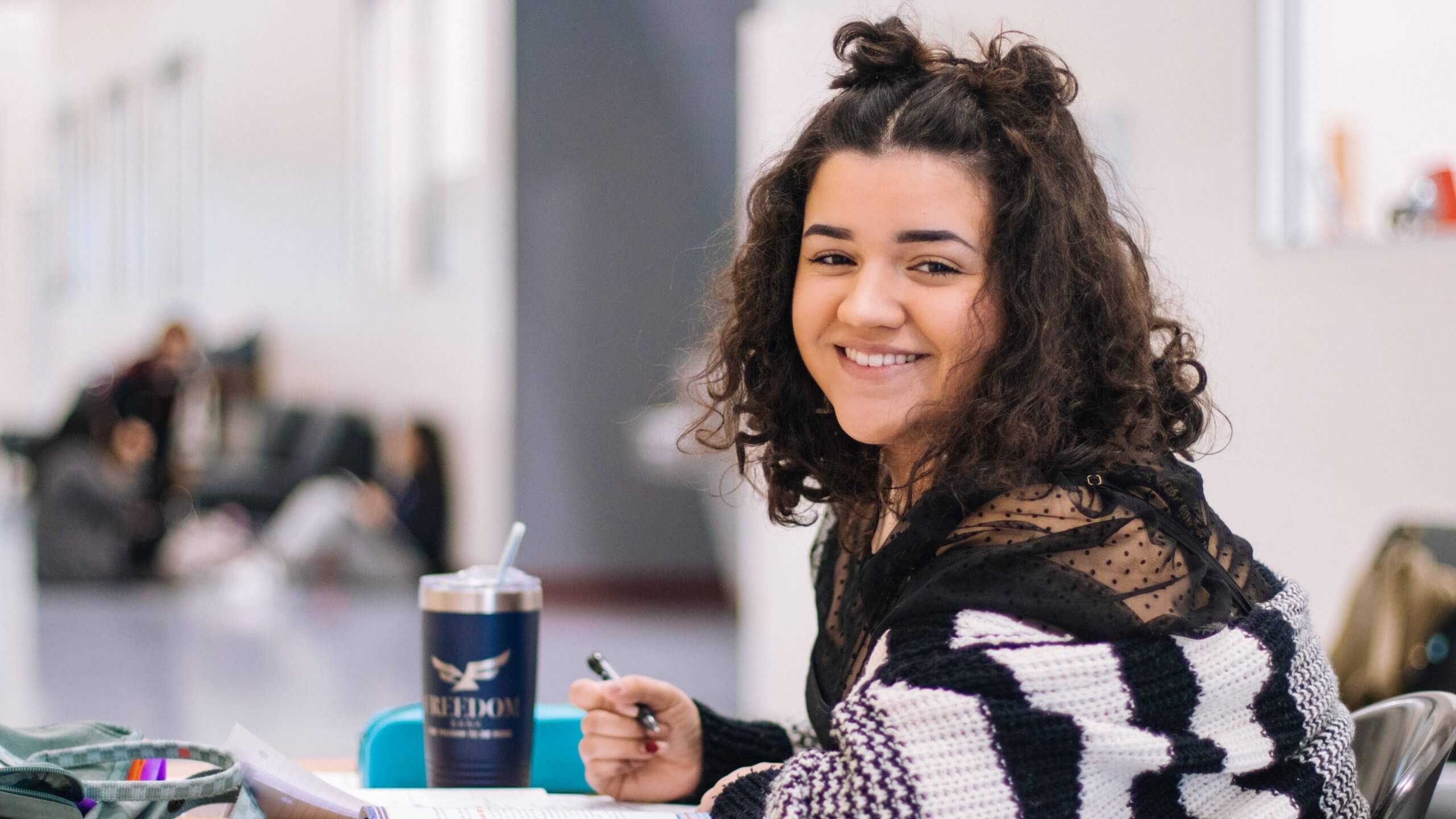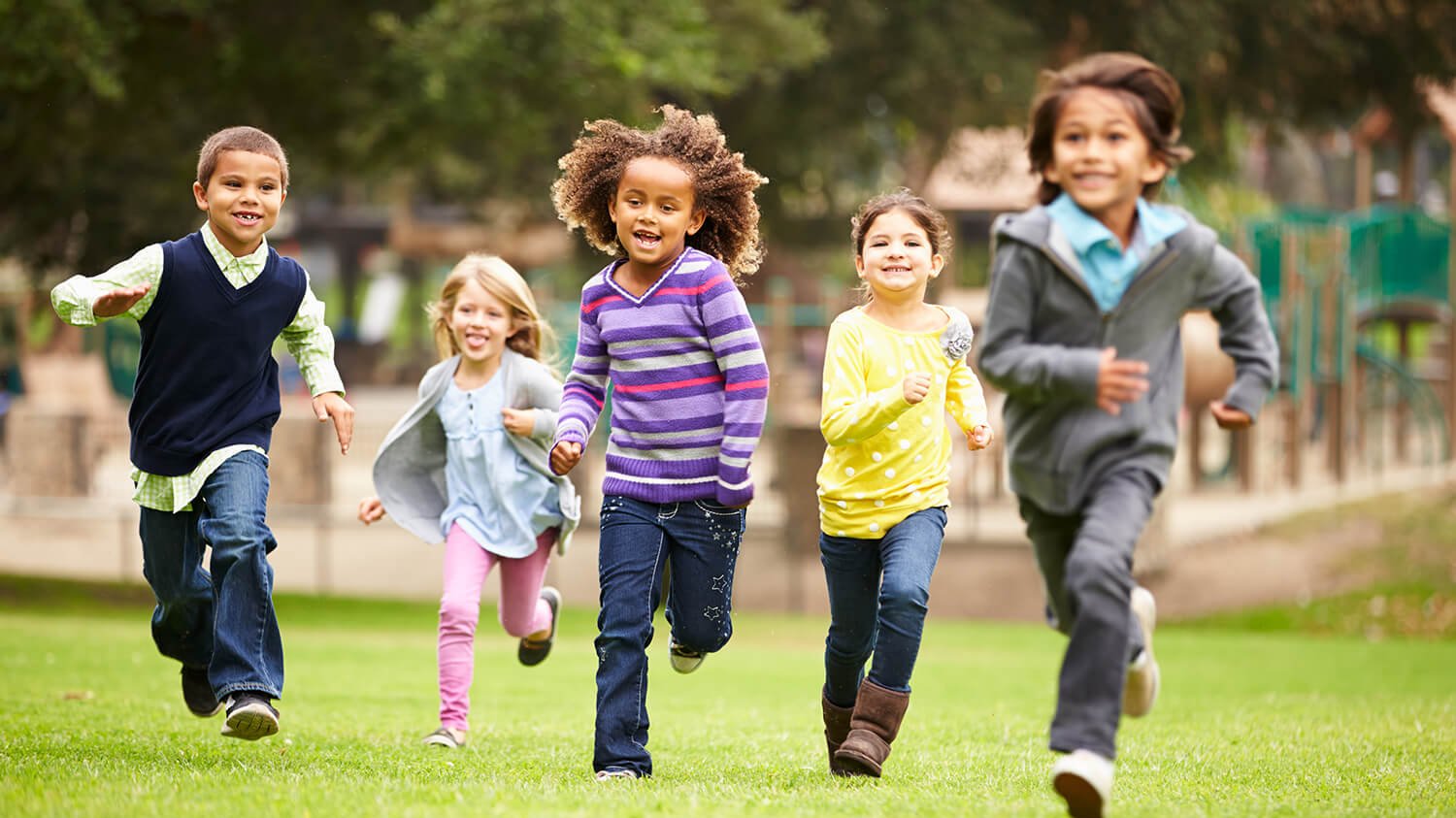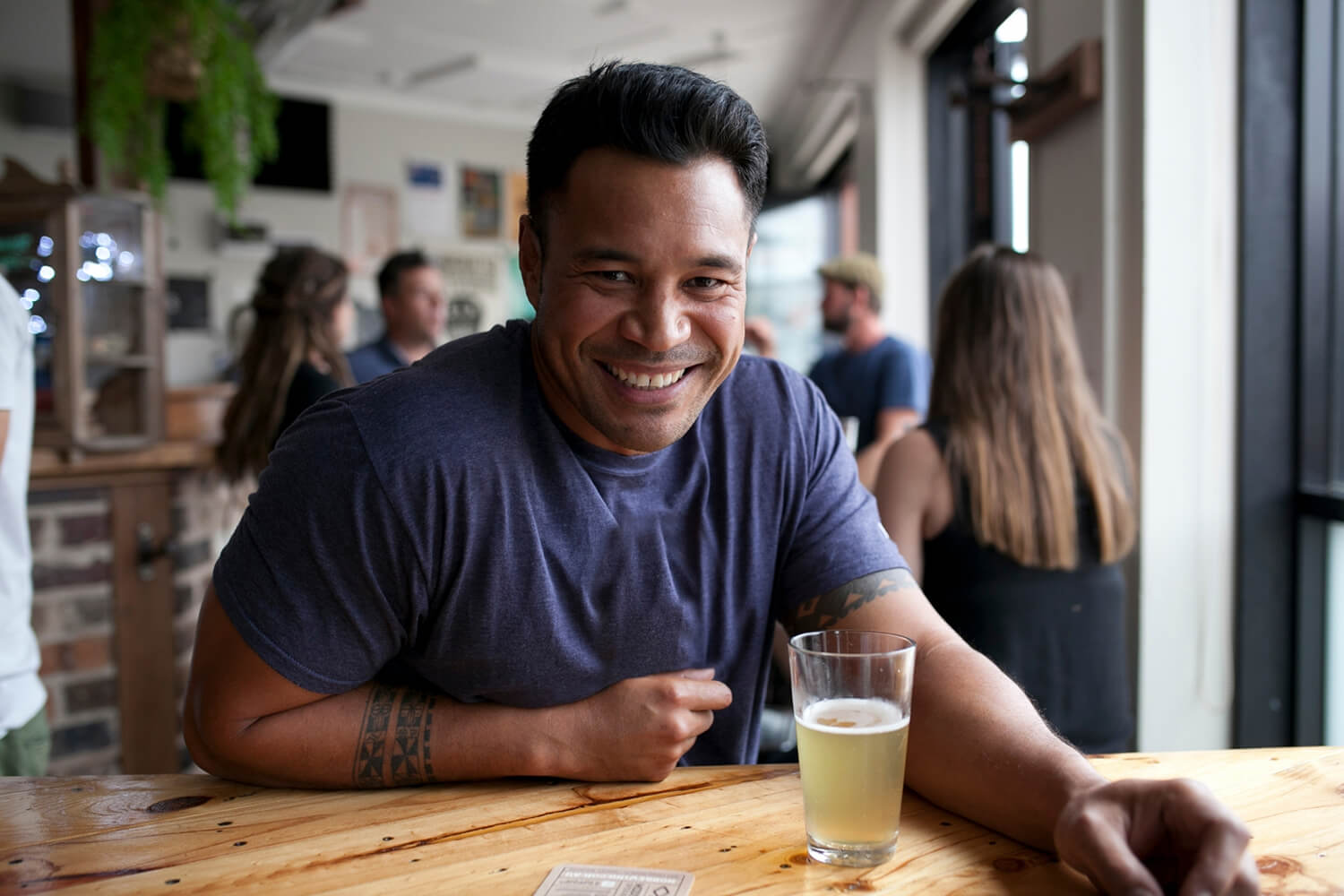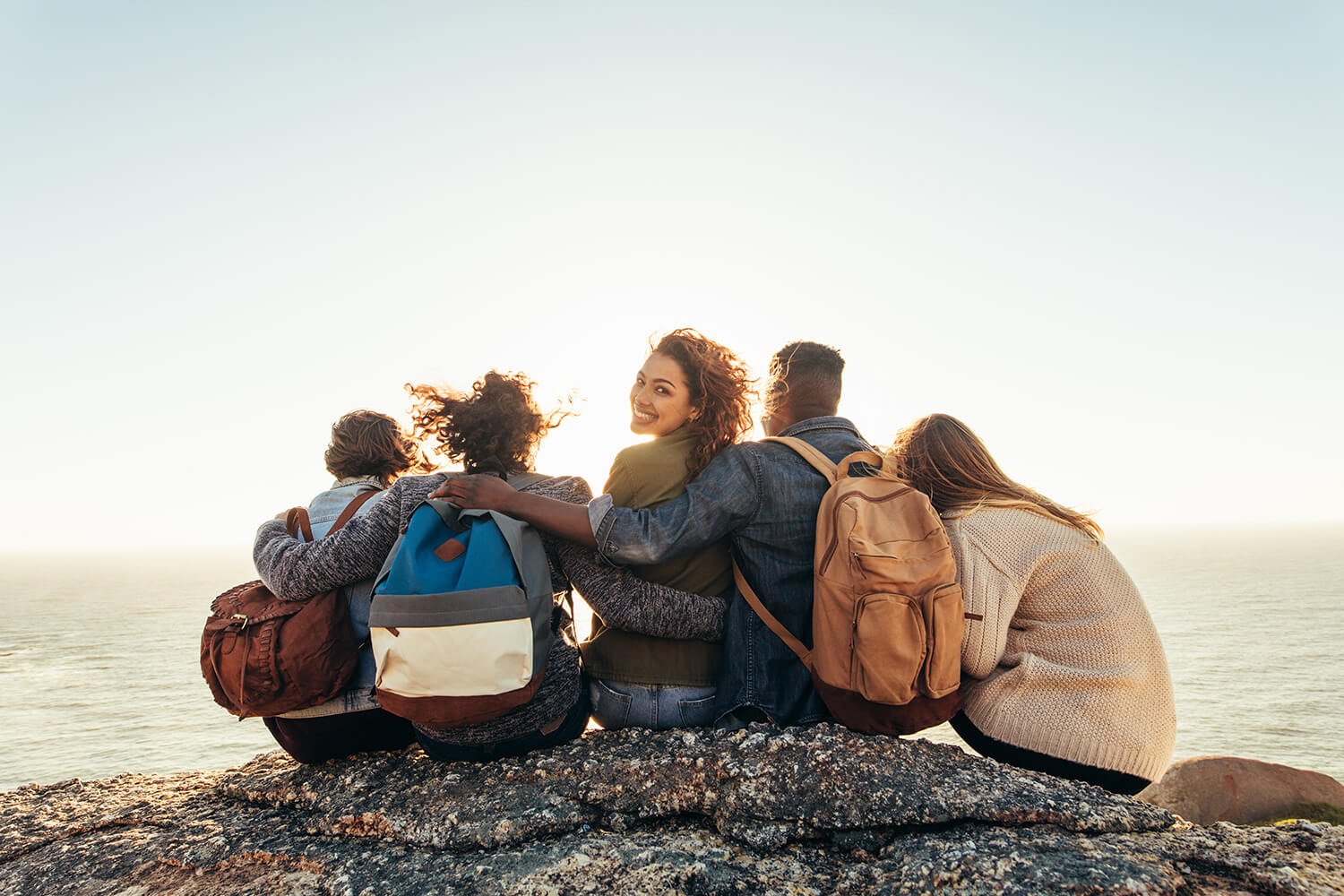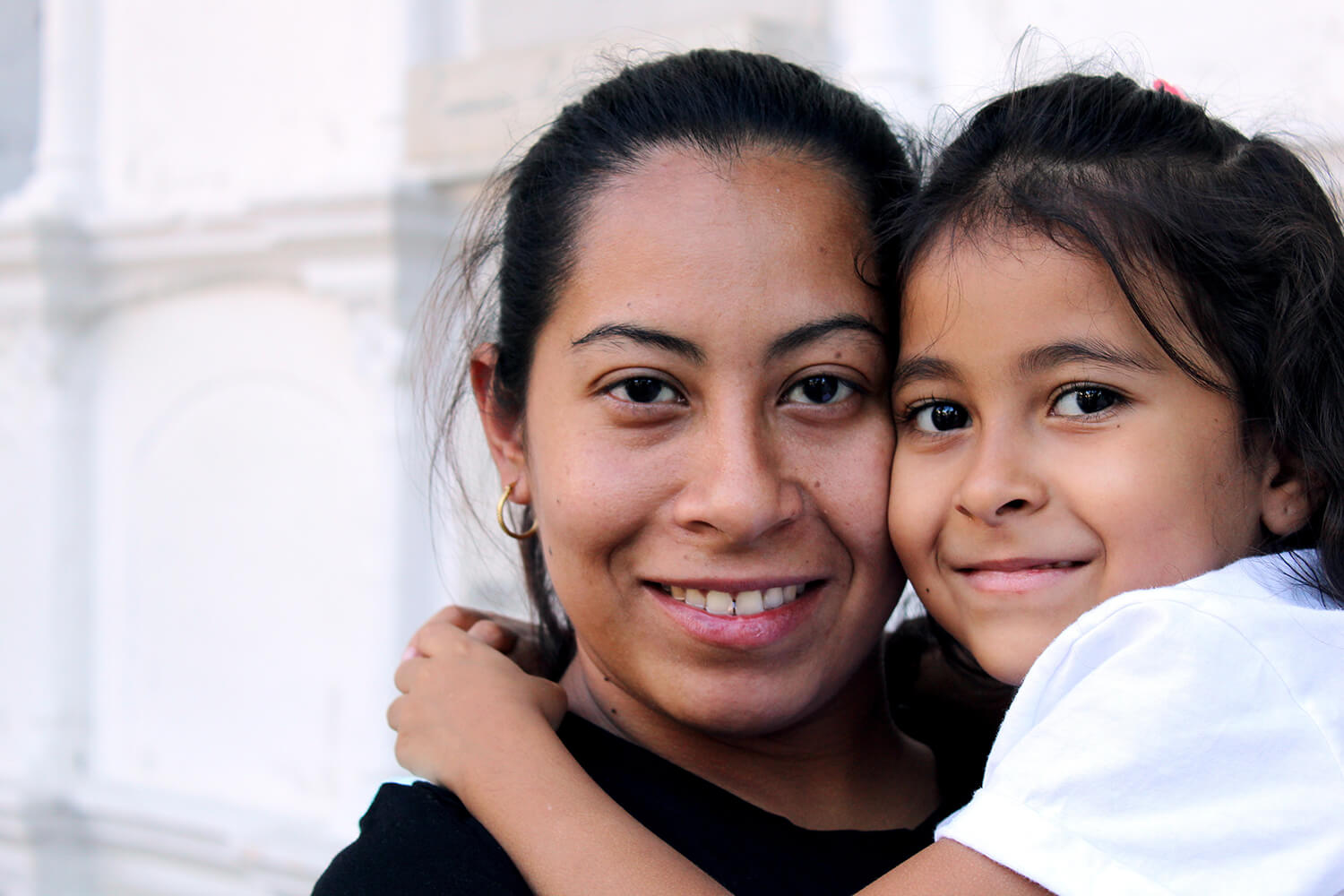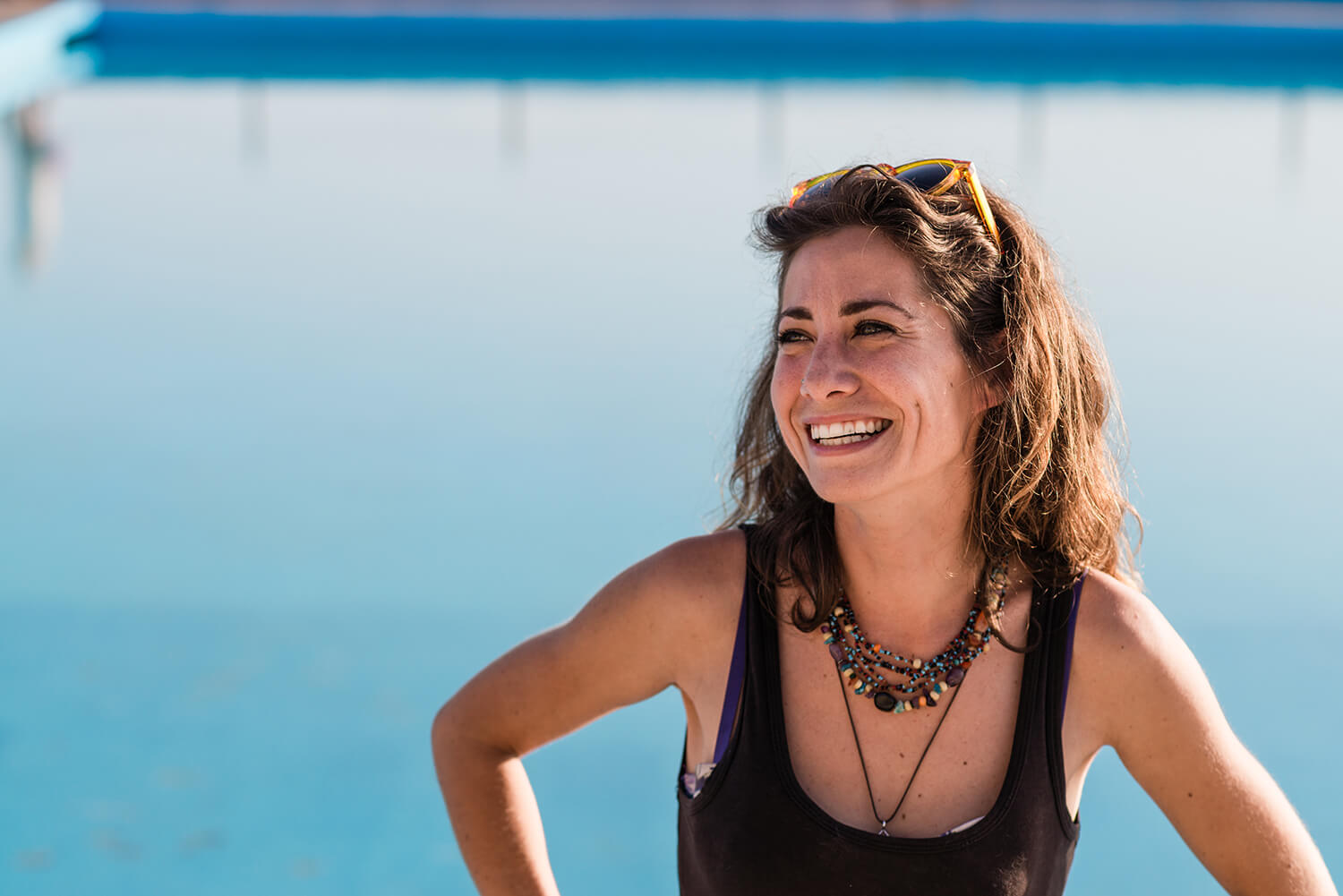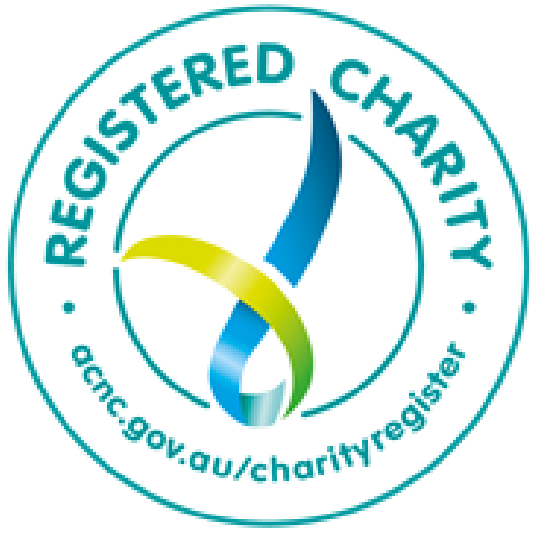Gender, sexuality & eating disorders
One million people in Australia will struggle with an eating disorder during their lifetime, and a significant number belong to the LGBTIQA+ community. Yet only 25% of those living with an eating disorder will ever seek help because they don’t fit the stereotype.
The history of discrimination against LGBTIQA+ people, along with not enough trained professionals to serve this community, is why many do not get the treatment they need. The good news is there are people working to change things. In this month’s Butterfly: Let’s Talk podcast, we talk to Katie, Mitch and Kai about their recovery, and Dr. Scott Griffiths and Tarn Lee from the National LGBTI Health Alliance who work in the space. Let’s talk.
This is the Butterfly podcast from the Butterfly Foundation, your national voice for people with body image issues and eating disorders. I’m Sam Ikin. In the last episode, we challenge the stereotype that eating disorders were only experienced by women. We showed you how prevalent they were among men. In this episode, we’re going to chip away at that misconception even further.
We know that eating disorders don’t discriminate. They could affect anyone regardless of age, post code, colour, culture, size, shape, gender, identity or sexuality. And it’s those last two categories that we’re focusing on in this episode; we’re going to find out why the LGBTIQA+ community is so overrepresented when it comes to eating disorders and body image issues and what we can do about it.
Tarnia
The system we’re living in isn’t designed for LGBTI people. There is this constant performance that happens every day.
Katie
I’m proof that you can completely lose control and be in a place where you would rather die from the abuse that you inflict on your body.
Kai
A lot of it was to do with hitting the wrong puberty and trying to sort of self-medicate, I guess, through an eating disorder.
Mitch
Someone very close to me perceived my coming out as a by-product of my relapse. Only on reflection, I realised how defining that moment was for me.
Host
Firstly, let’s talk about why it’s so important to break that stereotype that eating disorders are only experienced by young, wealthy white women. We already know that about a 1,000,000 Australians of suffering from an eating disorder right now, and almost one in 10 of us will in our lifetime. But a significant number of them don’t identify as having one because they don’t fit the stereotype. It’s so bad that only 25% of people who need treatment or specialised care actually look for help.
For the LGBTIQA+ community, the risks from these conditions are even higher. Same sex attracted men, for example, are seven times more likely to report bingeing and nearly 12 times more likely to report purging than heterosexual males. Two thirds of people who identify as trans or gender diverse report limiting their eating because of their gender identity. Even in teenagers there’s research suggesting that gay, lesbian and bisexual people are at a higher risk than their hetero counterparts.
Tarnia
We do know that minority stress plays into people’s self-image helping each, and that’s something that our community really faces.
Host
That’s Tarnia Lee. She’s the head of capacity building for Q-Life, which provides free and anonymous LGBTI peer support and referrals right around Australia.
Tarnia
So being a queer person who is facing all of these things every day, it would be really easy to let any of those health issues slide, particularly if you don’t feel that there is a safe or comfortable service to access. I think you’re right, with eating disorders being such a private thing that’s often hidden, I think it’s really easy for that one to slide. It’s not a health issue that your friends or family are necessarily going to notice, or feel comfortable, or have the language to have a conversation about. So I think it would be very easy for people to say “I’m going to deal with that later, there’s so much going on.”
Host
All the research suggests that this community needs more help with eating disorders and body image issues, but everyone and every group within the community all have different challenges of their own. This is not a case of one size fits all.
Katie
Being in a same sex relationship, I think, at least for me, has the potential to become a breeding ground for comparison and competition in a way that I’m not sure, for myself at least, would play out the same in hetero relationships.
Host
When she was growing up, Katie’s eating disorder was linked to the increasingly obvious fact that she simply didn’t fit the heteronormative model.
Katie
I first started to struggle with body image and food when I was in my last handful of years in high school, and I always felt a bit on the outer and also acutely aware that I didn’t feel like I fit in or that I was on the same pathway as my peers. I mean, in terms of getting crushes on boys or similar interests. Back then I genuinely didn’t understand why, I just convinced myself that there was something wrong with me and, you know, even magazines at that time aimed at teen girls, because they were gender binary, were all through a heteronormative lens, you know, “how to get boys to like you”, “special sections and instructions for moves that will drive boys wild”, “makeup tips”, “dieting tips”. Yeah, it was, I guess, loud and continuous confirmation that you don’t fit in with what society thinks you should be.
Kai
My community faces really high rates of eating disorders, but really low rates of seeking treatment.
Host
Kai identifies as gender diverse and for him, his eating disorder and his gender identity is directly linked.
Kai
I don’t think that I would have developed an eating disorder if I wasn’t trans, because for me, so much of it was this puberty is happening and it’s wrong, and whether I was sort of self-aware of it or not, I was really just desperate to stop that from happening. And unfortunately, when you limit your food intake and you’re assigned female at birth, your periods stop. You stop developing breasts. All the things that were causing me distress were things that I could sort of stop through really unhealthy behaviours, which, ideally, I wouldn’t have needed to do. And I could have gotten medical care that could have done that in a much healthier and less damaging way. It wasn’t necessarily conscious, but looking back, that was very much a part of what was going on for me.
Scott
What will often happen is that the individual transitioning wants to embody the gender to which they’re transitioning.
Host
At Melbourne University, Dr Scott Griffiths is the expert we spoke to in the last episode. He’s one of the top minds in the world when it comes to eating disorders among homosexual men and the trans community.
Scott
If you’re transitioning to a male body, then it’s pretty common that you want your body to reflect that as much as possible. And one way to do that is through diet and exercise. And you can imagine that all of that focus on dieting and exercise to build a particular body type can correct the sort of environment where an eating disorder can flourish. Not to mention that if you do transition that society expects you to conform to that body type if it’s the gender you’re going for. So it’s not even an issue off body image and appearance. It can become one of discrimination and personal safety.
Host
So a one size fits all approach when it comes to the LGBTI community simply won’t work. Dr Griffiths says it needs a tailored approach, and health care professionals need to have specialised training or even better, firsthand knowledge of these communities.
Scott
You really have to have a holistic understanding of what it’s like to be a trans individual and to be undergoing a reassignment and the current offerings we have are not tailored to that. There’s just not enough research and not enough in the way of resources for it yet. I think that’s probably the best example off a group that is drastically under-served.
Kai
A lot of it is stigma and the people in my community, already facing a lot of stigma from their existence and their identity, they don’t want to add any more layers to that. And people tend to think that trans people are inherently mentally ill because of who we are – when really there’s high rates of mental health issues because of discrimination and other factors.
Kai
Kai says that the stigma and that unhelpful stereotype surrounding eating disorders is a massive barrier to people in his community going and getting help in the first place.
Kai
In my head, you know, eating disorders were a girl’s thing and I am not a girl, so it can’t be something that I have, I just am sick and I’m dealing with it and it’s fine. But, I found it very difficult to accept the diagnosis label of that just because of what, in my head, that meant. Obviously it’s not true, not all people who experience eating disorders are women. In fact, a larger portion of people aren’t. But, you know, that’s the sort of the representation that I’d seen as a young person. Um, and it’s exciting to see that’s slowly starting to change now. And I think that would have made a difference to how early I reached out for help probably.
Host
The more we explore the relationship between eating disorders and the LGBTIQA+ community, the more we see how diverse these disorders can be. So when it comes to prevention, intervention, treatment and recovery, one size will never fit all but to tailor treatment plans and programs we need to understand the situation better, and to do that we need research and that takes funding, Dr Griffiths says there’s not a lot of data available for same sex attracted women.
Scott
That’s not to say that lesbians don’t also struggle. It’s just that we don’t run research with lesbians, so really we speak to the experiences off gay men, bisexual men and trans men and women.
Tarnia
There isn’t a lot of funding around for LGBT health research. There are a couple of great longitudinal studies that happened over the years. The Force Study, for examples, talks about same sex attracted women and drug use, drug and alcohol use. But there were no a lot of broader health studies for our communities. It is really hard to get that accurate data.
Host
So the research isn’t there yet. But that doesn’t mean same sex attracted women aren’t struggling with eating disorders.
Katie
I felt internal pressure or a jolt of anxiety when women I’ve been in relationships with have gone on a health kick, or started working out or critiquing their bodies, partly because it would be pretty easy for me to spiral backwards in an environment that’s slightly intimate and focused on body type. But also perhaps because we live in a world with the loudest messaging that women often hear focuses on, you know, the physical attributes that are associated with successful and attractive women. It takes a lot of self-awareness to recognise if I am going into a toxic place in a same-sex relationship, becoming too focused on how our bodies look different. Is my body bigger than yours? Do I fit in your clothes? Oh, I must be fat. Oh, I must be slipping. In a way that, like when I’ve dated men our bodies are so different anyway that it doesn’t… the wiring in thinking isn’t there for me.
Host
So not fitting the stereotype is one reason why people tend not to reach out. Another is because they have had poor health service experiences in the past. Experiencing discrimination, for example, they’ll have greater difficulty reaching out in future. Tarnia Lee says those kinds of experiences are really common in her community.
Tarnia
Many parts of our community have suffered forced medicalised treatment. If you look at intersex people within our community, they’ve had these really negative forced medical interventions. So there is already a fear and a distrust around medical practices in general. It’s something to bear in mind as well, working with people who have past trauma.
Host
A lot of the body image concerns for same-sex attracted men are initially adapted from heterosexual men, according to Dr Griffiths, and when the desire to retain that particular body type becomes pathological through diet and exercise, that’s when you run into problems. But, he says, there are more layers to it for the gay community.
Scott
There additional issues in the gay community around appearance, pressure and stigmatisation. If you don’t look a particular way, we get anecdotes and anecdotal reports all the time from members of the gay community of appearance based favouritism and discrimination that is often more than what you would say levelled against heterosexual men. There’s a sense of appearance, hot housing, that its value in gay male communities is conspicuously high.
Mitch
As a gay man. There are very rigid appearance ideals within that, and there is some degree some toxicity in the gay community around ‘if you don’t look this way, we’ll reject you’.
Host
We heard from Mitch for the first time in Episode two Men, we need to talk.
Mitch
There’s this intergroup kind of rejection that I’ve noticed, and particularly on certain apps like that, there is a lot of language and dialogue around, if you don’t look this certain way within we’ll basically just reject you.
Host
As we heard in the last episode, men are reluctant to ask for help because it doesn’t conform with their notion of masculinity. Asking for help can be seen as a sign of weakness and those unhealthy ideals are also present in the gay community.
Scott
I think gay men often proffer reasons that are similar to that of heterosexual men for not seeking treatment. But we talk about traditional notions of masculinity and we think reflexively of heterosexual men. But there are masculinities in gay culture, gay male culture as well. And whilst they differ from the masculinity ideals in heterosexual communities, there are some similarities, and some of those are being self-reliant, being in control of your emotions, having your shit together, and being independently able to take care of yourself. These are present in gay masculinities is as well, and to the extent you believe in those, and you start to feel like you’re coming undone by these appearance related, diet related, exercise related issues, you might be reluctant to go and seek
help because you really just want to get on top of it yourself. It’s from where you derive up your self-worth and self-esteem and identity being able to do that. So that is a very common reason why gay men won’t go forward for treatment.
Mitch
Reaching out for help was was challenging because it was admitting A) that I had a problem and as a man, sometimes problems are perceived as weakness and that we should be stoic in the face of those challenges and get up, get on with it, get over it. But for me, it was a very gradual process of reframing what I perceived to be strength, what I perceived to be weakness. And I have always said, and I will continue to say, that I believe making an attempt to seek help and seeking help is one of the greatest demonstrations of courage, strength and resilience that not only a man, but a person can do because it’s really leaning into that vulnerability and saying, ‘I need help. I don’t know how to navigate my way out of this by myself, and I need someone else’s eyes on that’.
Host
And while getting over the manly reluctance to ask for help was a big deal for Mitch, he also had to face some very confronting opinions from people that he loved.
Mitch
It was a very challenging point, and I’ve only really been able to reflect on that in the past couple of years on how challenging that was, to come out during a very intense relapse because someone very close to me perceived my coming out as a by-product of my relapse. And that was incredibly hard to navigate. Again, only on reflection, I realized how defining that moment was for me to understand what my sexuality meant at that point. And it was completely shameful at that point, to come out to make that leap, to come out in an already vulnerable period of my life, and to have someone dear in my life put it down to it being a by-product of an eating disorder. It just angers me now, and I’m still working through the resentment towards that moment, because it’s not that. There’s nothing wrong with my sexuality, absolutely nothing, and to put it down to it being a by-product of what was the most harrowing thing in my life, it dims the light on just how proud I am to be a gay man.
Tarnia
The services that are out there are mainstream services. There are no LGBT specific services and the way that they are promoted does have a really feminine skew. It’s more than just sticking a rainbow sticker on the door to get people in it. Really, that work has to be done really broadly across the service, and then, through word of mouth. Our communities will always go the other LGBTI people first for information and support so it’s then getting word of mouth out there that services are safe.
Host
Gender and sexuality are really complex issues. When those issues are compounded with mental health issues like eating disorders, we can get an understanding of how the LGBTIQA+ community is so badly affected and why it’s so important to provide safe, accessible and specialised care.
Tarnia
It’s often a health condition that stays really secret to people. There is a lot of shame connected to it, so I think the first thing that we need to do is make our community members feel safe to talk about this amongst themselves. I think the way we could do that is by starting conversations on social media, by cross promoting services together like this, by making podcasts and interviews like this available and having the conversation within communities.
Host
While we’re working on creating a safer future, the advice we can give to people who are struggling right now is that talking helps, talking to someone, anyone, is the first step towards recovery. But if you’re not ready to talk yourself, listening to others who have been there before is the next best thing.
Mitch
In terms of being a gay man, I think there are long standing kind of systemic and societal influences in that as well, that make reaching out for health care challenging because we don’t know the health professional’s stance on homosexuality on what it means to be an LGBTQIA+ person. You know, it was up until 1973 that homosexuality was a diagnosable mental disorder in the DSM, so there is still, in my mind, a lot that we need to do as a culture around facilitating meaningful and inclusive interactions on both parts; on both the health professional and the systems in which they belong, because there is a still a perception that if I disclose my sexuality to someone, am I going to be pathologised? This is challenging when you’re going there to try and get them to help you.
Katie
Everyone carries a story and if you keep your story to yourself, if you’re if you’re the only one critiquing it, to be able to put it out there and to get others’ perspective on things, I think it can be a breath of fresh air. For me to share my story and invite other people to share their story or to kind of reflect with me on my experiences, helps me to learn and grow and maybe understand myself, how I have arrived at certain places in a in a bit more depth. If I kept it all upstairs in my head, I wouldn’t have that same opportunity.
Kai
I share my own personal experience to try and encourage more people to get the support they need. My own experience informs the research and interest that I have in the academic side of all of this that, hopefully, once we understand more about eating disorders in LGBTIQA+ people we’ll be able to streamline the kind of treatment that people receive. That’s been sort of my fight for a couple of years now – doing lots of presentations on eating disorders amongst LGBTIQA+ people, and particularly trans people, to all the health professionals that will listen to me, and all of the academics that will listen. I’m just trying to get that understanding out there that this is a common issue that people need to be prepared for in their clinical practice.
Host
Making that first step to reach out and tell somebody that you need help is really hard. And if you’re at that point right now, I see you and there are services that make no assumptions about your story and will not discriminate. Q Life provides anonymous free LGBTI peer support and referrals for people in Australia who want to talk about sexuality, identity, gender, bodies, feelings and relationships. Each state and territory has their own services. If you look up Q-Life, you’ll find one near you.
To talk about eating disorders, the Butterfly National Helpline has counsellors who receive regular LGBTIQA+ training, and they’re committed to providing free, confidential, non-judgmental counselling. They can provide referrals and information to anyone experiencing an eating disorder or body image issue as well as friends and family. The number to call is 1800 33 4673. That’s 1800 ED HOPE. You can also chat online or email support@butterfly.org.au. If you want to talk about anything that we’ve raised in this podcast, please reach out. If you’re a social media butterfly, then jump on your favourite platform and get in touch. You can find all of the links for Butterfly Foundation at butterfly.org.au. You can look me up. I’m Sam Ikin on Twitter. And if you like the butterfly podcast, please tell a friend and subscribe wherever you get podcasts.
The Butterfly Podcast is an Ikin Media production for Butterfly Foundation. It’s written, produced, edited and hosted by me, Sam Ikin, with an exceptional amount of help from Camilla Becket, Mitch Doyle and Belinda Kerslake. The theme music is from Cody Martin, with additional music from Brakemaster Cylinder. Thanks to Dr Scott Griffiths from the University of Melbourne and Tarnia Lee from Q-Life. And special thanks to Kai, Katie and Mitch.


